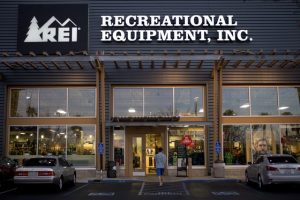It’s no secret that the retail landscape has dramatically changed over the past decade. With the click of a button you can read countless articles about the shift in consumer buying behavior and the collapse of long-lived retailers. The state of retail is evolving — not dying — and a major part of this evolution is the way a brand and retailers relationship is defined, and how they interact with each other.
The way we were
In the past, the value exchange between brands and retailers was not only clearly defined, their success was dependent upon one another. Brands needed retailers to help reach their consumers to sell products – at scale. Retailers needed brands to create great products to sell – at healthy margins. This relationship allowed brands to focus on brand building and retailers to focus on the final three feet of a sale.
But the days of clarity are behind us. With the rise of online advertising, social media, and e-commerce, the lines between brand and retailer are blurred. Lululemon, Nike, Adidas, Vans, Sephora, Lush. Would you call these companies a brand? A retailer? They represent the shift in the brand and retailer dynamic, where it’s difficult to label a company as one or the other, because they’re actually both.
As companies move to a hybrid model, the way they depend on one another, and the way they interact with their consumers, has changed. In today’s retail ecosystem, both brands and retailers must actively support the entirety of the consumer buying experience because the truth is, brands are retailers, and retailers are brands.
Brands are retailers
Going direct-to-consumers is no longer an option; it’s a necessity. Brands are expanding their DTC business not just because it drives healthy margin, but because it places them closer to the consumer. A proximity that gives the brand the opportunity to create long-term relationships with customers in a way that just isn’t possible through a channel partner. While channel partners may be able to provide positive buying experiences, they just aren’t the right facilitators for relationship longevity.
Stance has established themselves as a disruptor in the apparel industry, both in their product offering and in how they reach consumers. They reached a large target audience with the help of channel partners in brick-and-mortar retail, but in recent years they have deepened their relationship with their consumers by selling direct.

The Stance brand has now opened multiple brick-and-mortar stores in key markets (New York, Las Vegas, Irvine) to showcase their full lineup of socks, underwear, and t-shirts. What’s more, customers can purchase a monthly subscription to Stance, shipping socks to their doorstep every month, allowing for customers to either be surprised by what shows up, or to choose their own pair each month. Stance has focused on creating multiple touchpoints for consumers to interact with the brand — and for the brand to interact with their customers. As their customer touchpoints grow, so do sales.
Retailers are brands
Retailers can no longer rely on their vendors to build their reputation. Consumers are looking at retailers to stand for something, create a meaningful experience, and be a source for trust when trust is scarce. When retailers deliver their consumers become emotionally connected to the retailer as a brand rather than a point of sale.

REI has successfully made this transition over the years, most notably, in 2015 when they decided to close their doors on Black Friday, urging their shoppers to #OptOutside instead. At the time, this brand building campaign was expected to drastically hurt Q4 sales, but REI shoppers rallied around the idea and the retailer posted healthy numbers despite going dark on the busiest day of the year.
The Washington-based retailer has also found ways to create unique experiences for their consumers that create confidence in the associates working the sales floor. REI offers classes for consumers to learn how to maintain their bike, sea kayak, or take breathtaking landscape photography. While most of these classes are brand agnostic and are focused on the activity, REI is able to connect with their consumers in a way that creates trust and drives sales.
Bringing it together
Whether or not consumers realize it, they expect more from their shopping experience. With search engines and endless product offerings through the likes of Google and Amazon, this experience evolution needs to translate to the brands and retailers aiming to thrive. While the weight might have once been split, in today’s omnichannel world, brands and retailers share the responsibility. When they work together to support a seamless buying experience, the brand wins, the retailer wins, and most importantly, the consumer wins.




